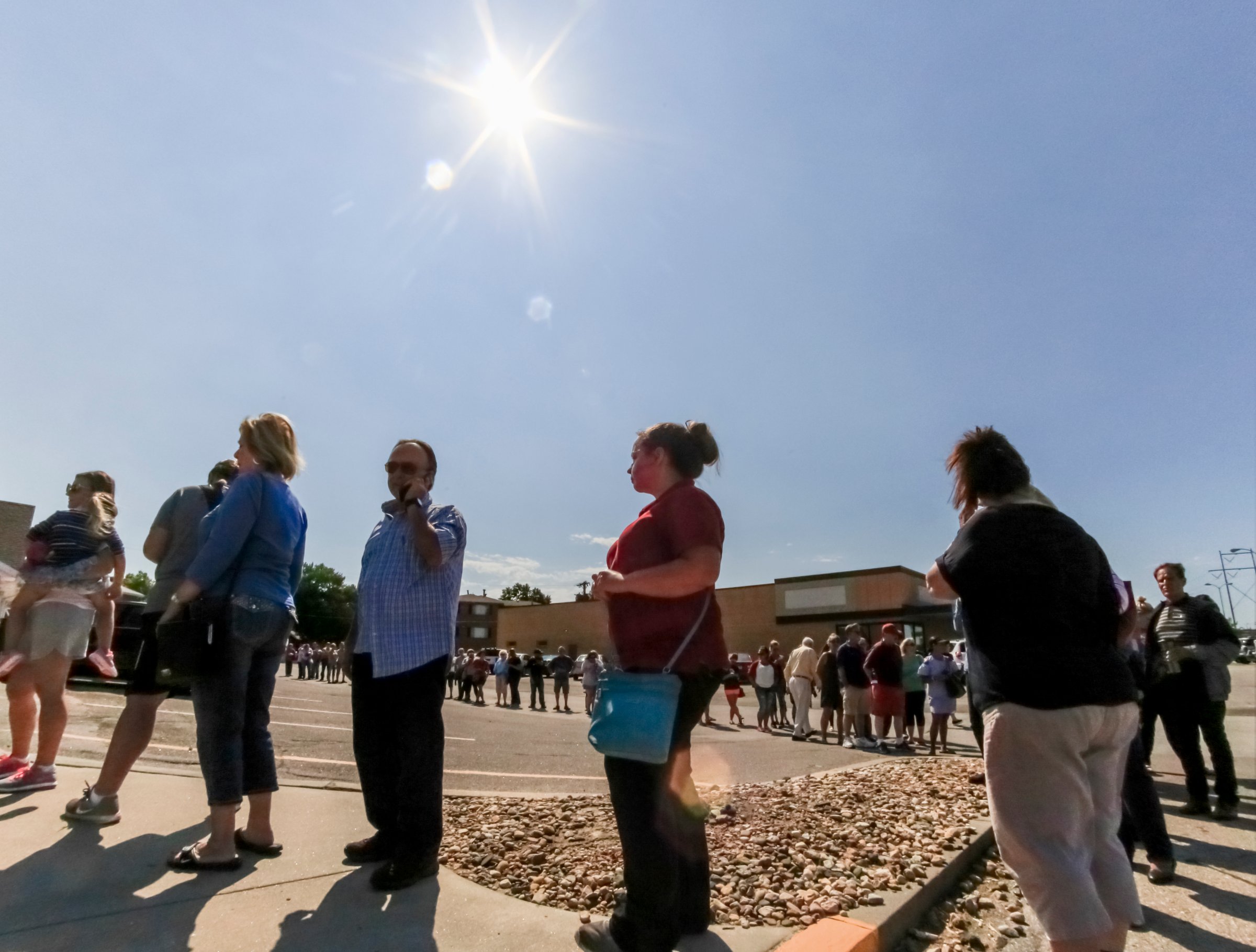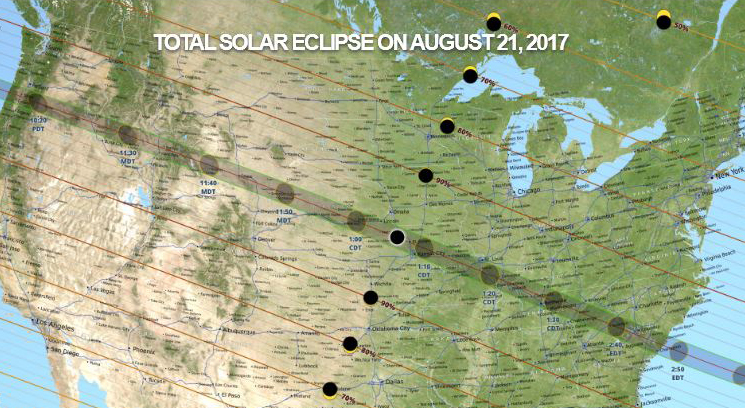
Meteorologists are expecting mostly sunny skies throughout the path of totality for Monday’s total solar eclipse, but some areas will likely be obscured by clouds.
While it was previously predicted that clouds may obscure the historic event for people in half of the country, the National Weather Service’s latest eclipse prediction on Monday says clouds will be minimal, except for parts of Nebraska and South Carolina.
Thick clouds are gathering near Falls City, Neb., where meteorologists say there will be 90% cloud cover by 2 p.m. EDT. There may also be scattered thunderstorms in the Nebraska city, which will likely block the view of the eclipse. The weather is also looking “unfortunate” near Charleston, S.C., which is expected to have rain and up to 80% cloud cover in the afternoon, according to Patrick Burke, the lead forecaster with the National Weather Service’s Weather Prediction Center.
Read More: Watch Live as the 2017 Total Solar Eclipse Crosses the U.S.
“More people will have their view obscured than won’t,” Burke said Monday. “You might be able to get lucky, depending on the timing of the thunderstorms. But for that area, it would be better if you were up in Columbia, South Carolina.”
As of Monday morning, residents in Columbia, S.C. were seeing mostly clear skies, according to Jim Gandy, chief meteorologist at WLTX, a local TV station in the area. “At the moment, it’s not bad,” he said. “Right now, I think we’re going to be in pretty good shape.”
Gandy said he’s expecting partly cloudy skies by totality. But even if there are a few clouds, the eclipse should still be visible from some areas on the ground. Gandy also said the approaching eclipse could move the clouds out of the way at the last minute.
“Totality creates its own weather. As the shadow approaches, the temperature will start to drop and that will stabilize the atmosphere. Clouds up there will begin to dissipate,” said Gandy, citing anecdotal evidence from astronomers. “It creates an opportunity for the sky to open up to see the eclipse.”
The total solar eclipse on Aug. 21 will cross the country from coast to coast and be visible only in America for the first time in the nation’s history.

It will pass through parts of 14 states, beginning in Oregon and continuing through Idaho, Wyoming, Montana, Nebraska, Iowa, Kansas, Missouri, Illinois, Kentucky, Tennessee, Georgia and North Carolina before ending in South Carolina.
More Must-Reads from TIME
- Donald Trump Is TIME's 2024 Person of the Year
- TIME’s Top 10 Photos of 2024
- Why Gen Z Is Drinking Less
- The Best Movies About Cooking
- Why Is Anxiety Worse at Night?
- A Head-to-Toe Guide to Treating Dry Skin
- Why Street Cats Are Taking Over Urban Neighborhoods
- Column: Jimmy Carter’s Global Legacy Was Moral Clarity
Contact us at letters@time.com